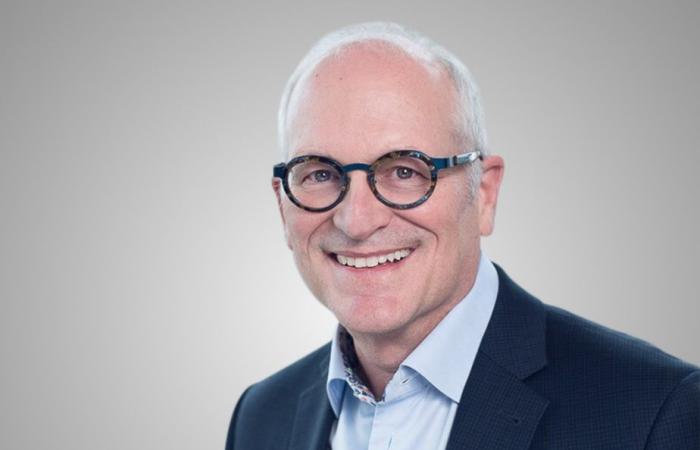Should the major Canadian pension funds, somewhat like the Caisse de dépôt et placement du Québec, demonstrate a greater national preference in their investments?
Published at 1:52 a.m.
Updated at 9:00 a.m.
This burning question is at the heart of a debate in the hushed world of investment. The Caisse is the model that inspires and scares with its dual mandate of optimizing depositors’ returns and promoting Quebec’s economic development.
In theory, a perfectly diversified investor would have a small stake in every asset in the world. In practice, this is neither possible nor desirable, but the wise investor spreads his eggs across many baskets.
National bias means the over-representation of investments in the investor’s country. Here, anything that exceeds 3%, or the weight of Canadian assets in the world.
A letter from business people laments that Canadian stocks have shrunk from 28% of total pension fund assets in 2000 to less than 4% in 2023, which increases the cost of capital for companies, reduces their value and their growth.1.
A national preference is financially justified by the informational advantage of the investor on its ground – the Caisse knows Quebec companies better than Chinese companies – and by a reduction of certain risks, such as currency fluctuations or expropriation.
In contrast, the Canadian stock market is not very diversified: financial institutions, energy (oil and gas) and raw materials represent 63% of the flagship index.
Finance Minister Chrystia Freeland has commissioned Stephen Poloz, a former governor of the Bank of Canada, to survey major credit unions to suggest measures that could encourage them to invest more in Canada. His report is expected in the fall.
Meanwhile, a study by Keith Ambachtsheer, a leading authority on pension funds, Sebastien Betermier, a McGill finance professor, and Chris Flynn of CEM Benchmarking, the world’s largest database on pension funds, provides useful insight by comparing the investments of 157 funds in Canada, the United Kingdom and the United States from 2013 to 2022.2.
In 2022, Canadian companies made up 18% of the equity portfolio of Canadian pension funds, down from 33% in 2013. Canadian bonds had declined from 96% to 88% over the same period. A similar trend is observed in the other two countries, thanks to international diversification.
The weight of equities also declined in favor of real estate and infrastructure, which, in terms of risk and return, are between equities and bonds.
Canadian big money has invested heavily in infrastructure abroad, such as ports in Australia and airports in Europe, but in Canada these prized assets are owned by the government. The authors recommend that Ottawa sell them and recycle the proceeds into new infrastructure.
National preference measured as a percentage is an imperfect indicator. The larger a fund is, the more imprudent it becomes to have a high proportion of its investments in the country and become a big fish in the pond. The Caisse wants to increase its Quebec assets to $100 billion by 2026, but says nothing about the percentage, which could remain around the current 20%.
It would be a mistake to reimpose on pension funds (and RRSPs) the Canadian content requirement abolished in 2005 and easily circumvented with derivative products.
A golden rule is to respect the autonomy of managers in choosing investments. Politicians can propose projects, create incentives, but the conflict of interest is too great to force a favorable decision.
Fortunately, the Caisse can refuse a public transport project in the east of Montreal, but invest in Quebec if it judges the conditions to be favorable.
The large public funds known under the pseudonym Maple 8 do not want the dual mandate of the Caisse3. They let the phone ring when a minister calls.
In 1965, the creation of the Caisse was an expression of Jean Lesage’s “Master in our own house”. Times have changed. It would be appropriate to reframe national preference as a manifestation of sustainable finance, which is concerned with the effects of its investments on the economy, the environment and society. After all, retirees and future retirees are concerned about the world left to their children.
In line with their fiduciary duty, actively managed pension funds can play a key and rewarding role in financing the transition to a low-carbon economy, by investing in green infrastructure and companies with credible decarbonisation projects.
It is more complicated, but necessary, to reconcile risk management, the search for returns and the favorable impact on the environment and society. Not in every investment, not to solve all the problems, but this balance is the North Star of sustainable investments.
1. Read the letter “The importance of investing in Canada”
2. Read the study “Should Canada Require its Pension Funds to Invest More Domestically?”
3. In addition to the Fund, the Maple 8 include the Canada Pension Plan Investment Board, OMERS, AIMCo, BCI, HOOPP, Ontario Teachers’ Pension Plan and PSP Investments.
What do you think? Join the dialogue







